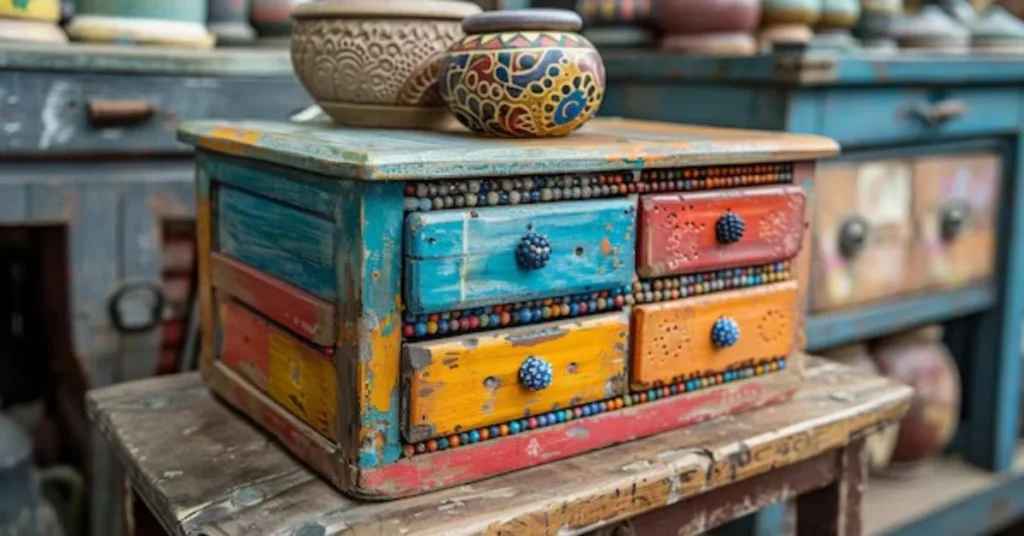A Chinese cabinet is more than just a storage piece; it is a reflection of rich cultural heritage and craftsmanship. Known for their solid construction, intricate designs, and timeless beauty, Chinese cabinets are a unique and versatile addition to any home. They serve multiple purposes, from storing clothing and kitchenware to displaying fine art and heirlooms.
History and Cultural Significance
Chinese furniture has a deep-rooted tradition that dates back thousands of years, evolving through various dynastic periods, each leaving its distinctive mark. The origins of the Chinese cabinet can be traced back to the Han Dynasty (206 BC – 220 AD), when the craftsmanship of wood and intricate furniture began to flourish. These early cabinets were functional pieces designed to store food, clothes, and valuable items. However, as time passed, they became symbols of status, wealth, and taste in Chinese society.
During the Ming Dynasty (1368–1644), the art of creating cabinets reached its peak. Cabinets from this era were known for their stunning design, meticulous craftsmanship, and quality materials such as elm wood and rosewood. It was also during this period that its design began to include decorative carvings and intricate patterns. Hand-painted illustrations and detailed inlays started to become popular, adding to the aesthetic appeal of these pieces.
Today, it blend traditional techniques with contemporary elements, offering a wide range of styles suitable for both modern and classic interiors.
The Design Elements
One of the main features that set Chinese cabinets apart from other furniture types is their design. Whether it’s a modern Chinese cabinet or a traditional style, these cabinets are crafted with attention to detail and aesthetic harmony. The design of a Chinese cabinet is often influenced by the philosophy of balance and symmetry, which is central to Chinese culture.
Traditional Chinese Cabinets
Traditional Chinese cabinets are often characterized by intricate hand-carved patterns, lacquered finishes, and brass hardware. The Chinese cabinet furniture from this period was often designed with ornamental details, such as floral motifs, birds, and animals. Many cabinets featured large, flat surfaces, often with multiple drawers or compartments, and doors adorned with beautiful carvings of traditional Chinese symbols, such as dragons, phoenixes, or symbols of prosperity and luck.
The wood used in these cabinets, such as elm and rosewood, was carefully selected for its durability and natural beauty. The wood was then finished with lacquer to protect it and enhance its rich color. The use of lacquered finishes helped to bring out the fine grain of the wood, giving the furniture a polished, glossy appearance.
Modern Chinese Cabinets
In contrast to traditional pieces, modern Chinese cabinets tend to favor sleek lines, minimalist designs, and a more restrained approach to ornamentation. The wood may still be the same, but the style of the cabinet is less ornate, focusing on clean, simple forms. Modern cabinets may still include subtle decorative touches, such as metal hardware or small carvings, but the emphasis is on functionality and aesthetic simplicity.
Some contemporary designs incorporate bold colors and abstract patterns, offering a modern twist on traditional themes. The use of modern Chinese cabinet designs in homes today has become increasingly popular, especially among those who want to combine traditional aesthetics with a more modern lifestyle.
Chinese Cabinet Furniture for the Kitchen
While cabinets are traditionally thought of as storage for clothing or valuables, there is also a place for Chinese cabinet furniture in the kitchen. A cabinet kitchen can serve as both a practical and decorative piece of furniture. These cabinets may be used for storing kitchenware, cookware, or even food, while also adding a unique cultural element to the space.
A Chinese cabinet kitchen often features a combination of open shelves and closed compartments, allowing homeowners to display their favorite pieces of dinnerware or decorative items while still keeping less attractive items hidden. The use of lacquered finishes ensures that these cabinets are durable enough to withstand the wear and tear of a kitchen environment.

The Versatility
One of the greatest advantages of Chinese cabinets is their versatility. They can be used in a variety of ways and can fit seamlessly into many different home decor styles. Below, we will explore the various applications of Chinese cabinets.
As a Wardrobe or Armoire
In a traditional sense, a Chinese cabinet was often used as a wardrobe or armoire. The Chinese cabinet design for this purpose is spacious, featuring multiple drawers, compartments, and hanging areas. It was the ideal storage solution for keeping clothes organized and protected from dust and moisture.
Many people today still use these cabinets as wardrobes or armoires, especially in bedrooms with a traditional or eclectic style. The large, flat surfaces and ample storage space make them ideal for holding not just clothes, but linens, shoes, and other personal items.
As a Display Cabinet
Another popular use for Chinese cabinets is as a display cabinet. The open shelving and glass doors of some cabinets allow homeowners to showcase their collections of fine china, glassware, or decorative items. The hand-painted illustrations and intricate carvings on these cabinets add to the visual appeal of the displayed items, creating a stunning focal point in any room.
In the Living Room or Dining Room
A Chinese cabinet can also be a beautiful addition to a living room or dining room. When used as a sideboard or buffet, it can serve both functional and aesthetic purposes. It can be used to store serving dishes, silverware, or linens, while also adding an element of culture and artistry to the room.
In a Chinese cabinet kitchen, the same principles apply. The cabinet can add a layer of sophistication to the kitchen, where it can be used to store utensils, dishes, and glassware, while showcasing its beauty through the design itself.
Choosing the Right Chinese Cabinet for Your Home
When choosing a Chinese cabinet, it’s essential to consider a few key factors. First, determine its purpose—will it primarily serve as storage, a display piece, or both? Next, think about the style that best suits your space. For a traditional aesthetic, opt for an ornate cabinet featuring intricate carvings and lacquer finishes. Alternatively, if you prefer a contemporary look, a sleek and minimalist design might be the perfect fit.
Additionally, consider the size of the cabinet in relation to your space. It come in various sizes, from small sideboards to large armoires, so make sure to choose one that fits the available space in your home.
Conclusion
A Chinese cabinet is more than just a functional piece of furniture—it’s a testament to the centuries-old traditions of craftsmanship, design, and cultural heritage. Whether used in the kitchen, living room, or bedroom, a Chinese cabinet brings an air of elegance and sophistication to any space. With designs ranging from intricate carvings to sleek modern lines, this furniture is an essential piece of decor for those looking to combine beauty, functionality, and history in their homes.
FAQs
1. What is a Chinese cabinet?
This is a type of furniture traditionally used for storage and display. It can be an armoire, wardrobe, or cupboard, often made from solid wood like elm and finished with a glossy lacquer.
2. How do I choose the right Chinese cabinet for my home?
When choosing a Chinese cabinet, consider the purpose it will serve, the size of the cabinet, and whether you prefer a traditional or modern design. Ensure that it complements the rest of your decor.
3. What materials are Chinese cabinets made from?
Traditional Chinese cabinets are often made from high-quality woods like elm, rosewood, and mahogany, with lacquer finishes to protect the wood and enhance its natural beauty.
4. Can a it be used in the kitchen?
Yes, kitchen can be used to store kitchenware, dishes, and utensils. They are both functional and decorative, adding a cultural touch to your kitchen.
5. What are the common features of modern Chinese cabinets?
Modern cabinets typically have sleek lines, minimalist designs, and may feature bold colors or abstract patterns. They focus on simplicity and functionality, often with subtle decorative elements.
6. Are Chinese cabinets durable?
Yes, this furniture is known for its durability. The solid wood construction, along with the protective lacquer finishes, ensures that these cabinets can last for generations when properly cared for.








